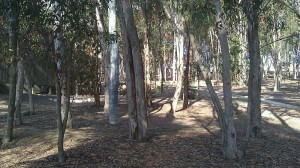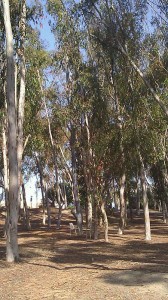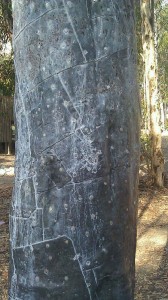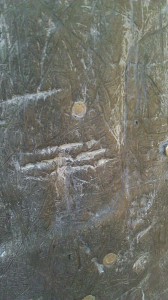There’s this dead tree outside my weekday office. A crew has been working on it for the last two weeks.
It’s one of three very dead trees that make up an 1986 installation by Terry Allen. Set in an area of the UCSD campus that’s seen many of the campus’ signature eucalyptus cut down to make way for buildings, they’re in part supposed to embody trees that were lost to the chainsaw of progress. The writeup at the Stuart Collection website has lots of things to say about the project, including: “Although they ostensibly represent displacement or loss, these trees offer a kind of compensation: one emits a series of recorded songs and the other a lively sequence of poems and stories created and arranged specifically for this project.”

Yes. Two of the artist’s trees make noise. Loud, annoying noise. So in effect this artists has taken a tree–something that to me represents the possibility of the quiet that you find in a grove–and replaces it with devices with speakers in them that pollute the thin grove with poetry and loud music. By banishing what’s left of the quiet it’s the aural equivalent of clearcutting what’s left of the trees. You call that compensation?
I do not love this work.

The trees in the project started out their lives in the adjacent groves but were removed. They were then dissembled and soaked in wood preservative. Once thoroughly embalmed, the trees were reassembled and sheets of lead nailed all over their outer surfaces. Over the course of 25 years the one mute tree–the one with the scissor lift next to it in the first phot above–developed the sort of white and yellow oxidation that lead can acquire over time. Oxidized lead makes up the artist’s pigment lead yellow, and sulfides of lead can turn the lead white.

I guess the natural processes went against the artist’s intentions of having a dark ghost of a tree the color of raw lead. The two workers have been pounding and cleaning and maybe even replacing some of the lead plating. The tree is starting to look really dead again.
My final thoughts? I don’t think this artist really gets nature. Natural processes are being denied. And now, you can’t hear the forest for the trees.




